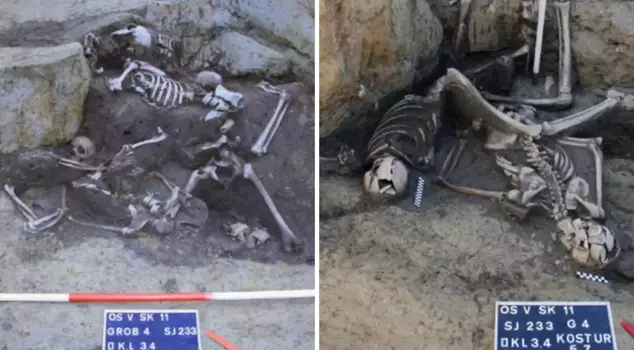
16.10.2025 15:52
In archaeological excavations in eastern Croatia, remains belonging to Roman soldiers were found at the bottom of an ancient well. The fact that the skeletons of seven individuals are completely preserved is noteworthy. These findings provide significant information about events dating back 1,800 years and the Roman period.
```html
In excavations conducted in the east of Croatia, remains of Roman soldiers were found at the bottom of an ancient well. Archaeologists describe this area, where the remains of seven individuals were discovered, as a "mass grave" and state that they are likely victims of a major battle.
Particularly noteworthy is the complete preservation of the skeletons. This allows experts to obtain significant information about events dating back to 1,800 years ago and the Roman period.
The excavations took place in the ancient Roman city known today as Osijek, which was called Mursa at that time. Researchers believe that these soldiers may have died during the Battle of Mursa. This battle occurred in AD 351 and is recorded as one of the bloodiest conflicts in Roman history.
Lead author Mario Novak stated:
"This mass grave containing seven completely preserved skeletons was discovered in the Roman period city of Mursa. This is quite an extraordinary archaeological find."
It is noted that mass graves were not common in Rome; however, researchers indicate that they were used during major disasters or wars.
At that time, Mursa was an important settlement in the province of Pannonia, near the Danube River. The Roman army conquered the region in the 1st century BC and established a military camp there; this camp gradually transformed into a civilian settlement. The city also became an important center for trade and crafts.
Mursa witnessed many wars and conflicts, especially during the crisis periods of the Roman Empire in the 3rd and 4th centuries. For example, in 260, Emperor Gallienus fought against Ingenuus, and in 351, Emperor Constantius II battled Magnentius.
The Battle of Mursa took place on September 28, 351, and resulted in numerous casualties. Constantius emerged from this battle with a pyrrhic victory (a victory that comes at a heavy cost); approximately 30,000 soldiers lost their lives. Researchers believe that the individuals found in the well may be Roman soldiers who died in this battle.
Ancient DNA analyses show that these soldiers had different ancestries and had no genetic connections to the previous Iron Age population in the region. Archaeological findings confirm that these individuals were Roman soldiers and most likely victims of the Battle of Mursa.
This discovery sheds light on the realities of warfare 1,800 years ago and greatly contributes to our understanding of the living and dying conditions of Roman soldiers at that time.
```